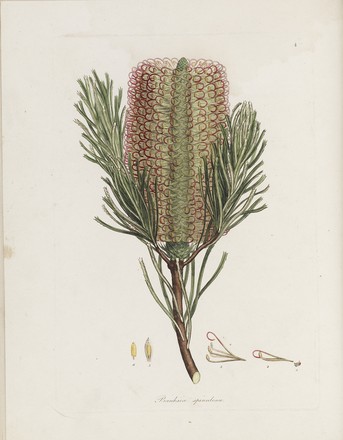
‘Banksia spinulosa’ or Hairpin banksia, from Zoology and Botany of New Holland and the Isles adjacent
London: Printed by J. Davis: published by J. Sowerby, 1794; Dixson Library, State Library of NSW; Bequest of Sir William Dixson, 1952Q79/59
Printed book


 Back to list
Back to list